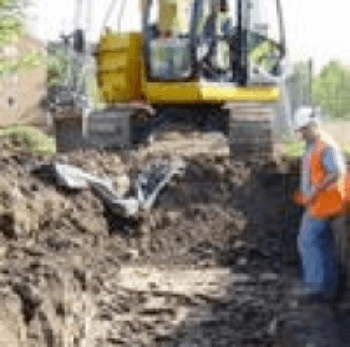
INNSA Standard
INSTALLATION OF ROOT BARRIER FOR JAPANESE KNOTWEED
There are several instances where installation of a suitable root barrier may be required as part of a Japanese knotweed management plan, for example;
- Where Japanese knotweed infestations are near existing structures, it may not be possible to excavate the Japanese knotweed in its entirety due to potential to undermine foundations etc.
- Where Japanese knotweed infestations cross land ownership boundaries, it is not usually possible to excavate beyond the party wall / fence line, therefore a suitable root barrier should be used to reduce the risk of re-infestation from the contaminated site.
- Where proposed development will allow, a reduced-level partial excavation may be feasible to reduce disposal costs. However, a suitable root barrier must be installed to prevent future damage to the proposed development.
In all scenarios, it is essential that root barriers are installed correctly, as a root barrier is only effective if it has been installed in the correct way, with the correct overlay and joints. Supervision by a suitably qualified person is essential during root barrier installation.
Consideration should be given to the type of root barrier used. Some root barriers are more cost effective than others but there may be limitations to cheaper alternatives, such as diminished static puncture resistance or impermeability. This is especially relevant when installing root barriers to large areas because water-retention is generally undesirable. Japanese knotweed rhizome material can remain dormant for upwards of twenty years, therefore the root barrier’s material integrity should be guaranteed for a minimum of fifty years.
Prior to installation, faces of excavation should be uniform and free from sharp objects such as bricks and roots. Where removal of all sharp objects is not possible, a blinding layer of sand should be laid on the exposed surface to protect the installed root barrier. If the material used for backfilling contains sharp material, sand blinding should also be applied to the face to the installed root barrier depending on the type of material Plant and machinery should also be prevented from travelling across root barriers, as this activity can compromise the integrity of the barrier.
When installing vertical root barriers, the root barrier should be installed on timber sheeting to prevent creasing and ensure uniform installation. This will also help the root barrier to retain its profile during backfilling.
It is essential that no Japanese knotweed material migrates to the clean side of the installed root barrier during backfilling. It is therefore important that you check any imported soils for contamination.
Root barriers should be installed using the minimum number of joints possible to maintain the integrity of the root barrier. Where jointing is unavoidable, seams should be welded. If this is not possible due to the type of root barrier used, root barrier should be installed with sufficient overlap of not less than two metres. Where root-barriers are penetrated by services, root barrier should be sealed to ducting using appropriate jointing tape or similar.
Following installation, the area of installed root barrier should be recorded so subsequent works within the area do not compromise the installed root barrier.
